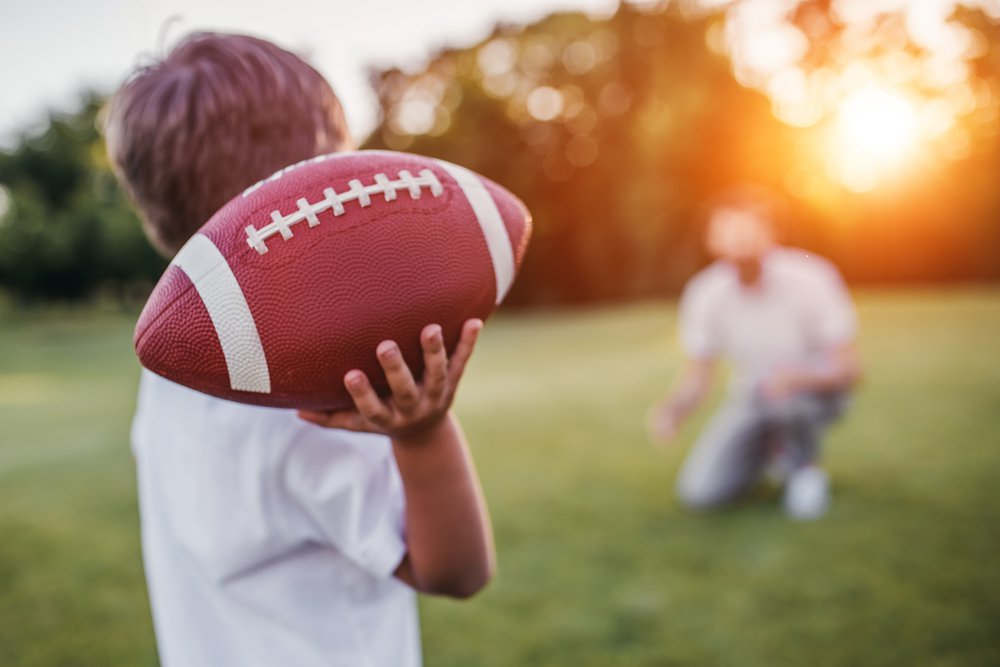 The beginning of the school year is an exciting time for students, especially young athletes who are heading back on the field to participate in fall sports. Unfortunately, with all the excitement also comes a heightened risk of injury, especially in certain fall sports such as soccer, football, and field hockey. These injuries can not only affect your child’s ability to play -- the recovery period can ultimately affect their academic success and quality of life.
The beginning of the school year is an exciting time for students, especially young athletes who are heading back on the field to participate in fall sports. Unfortunately, with all the excitement also comes a heightened risk of injury, especially in certain fall sports such as soccer, football, and field hockey. These injuries can not only affect your child’s ability to play -- the recovery period can ultimately affect their academic success and quality of life.
At Performance UNLIMITED, physical therapy specialist Dan Glatz knows how important it is for parents and student athletes alike to practice awareness of sports injuries and prevention techniques to keep kids safe. Here are four common injuries to watch out for as your student hits the field this fall:
1. ACL Injuries
Injuries to the anterior cruciate ligament -- or ACL -- are some of the most commonly reported injuries among fall athletes. The ACL is an extremely vital ligament in the knee, responsible for stabilizing the bone, cartilage and muscle needed to stand and flex the knee to its full capacity. If sprained or torn, the ACL can fail to perform its function, making it painful and difficult to walk, much less run or jump. Some of the most common symptoms of an ACL tear include:
- A “popping” sound in the knee at the time of injury
- Pain in the knee
- Swelling in the knee
- Difficulty walking
- A limited range of motion in the affected knee
ACL injuries often happen as a result of a sudden turn, pivot, or jump, which are common movements during fall sports like soccer and football. It’s important for your child to use proper techniques and equipment in order to prevent these injuries from occurring as effectively as possible.
2. Sprains and Strains
Sprains and strains are extremely common injuries that can be sustained during any kind of athletic activity, including fall sports. Strains are liable to happen any time a muscle is put under too much duress, especially during the contraction or stretching of a particular body part during sports. Sprains, on the other hand, can be caused by a twisted joint (such as an ankle, knee or wrist), or traumatic contact with a player, ball, stick, or other object. Muscles that haven’t been adequately stretched before physical activity are significantly more prone to strain or sprain, so your student athlete should always be sure to warm up before practice or a game.
3. Whiplash
Whiplash is a common name for a condition in which the neck is suddenly and violently thrust forward or backward, creating strain on the muscles and even damage to the affected tissues. Whiplash commonly affects student athletes who play full contact sports, particularly football during the fall season. Some of the most common symptoms of whiplash include:
- Neck pain
- Shoulder pain
- Stiffness in the neck
- Headaches
- Dizziness
4. Concussions
Concussions are potentially one of the most serious types of sports injury that can happen to a student athlete, particularly football players. If your child sustains a concussion after traumatic impact to the head, they’ve actually received a mild brain injury. Concussions can present themselves in a number of symptoms, including dizziness, mental fog, insomnia, headaches, and irritable behavior. Additionally, post-concussive syndrome can persist even after a concussion has resolved, making it extremely important to receive care and monitoring from a sports injuries clinic as soon as possible.
Injuries sustained during fall sports can put students on the bench from everything they love, including their sport and their studies. If your student athlete has been injured and is in need of hands-on physical therapy, or you’re in need of sports injury prevention tips from a professional, Dan Glatz of Performance UNLIMITED is here to help. Reach out to us and schedule your first appointment today!
